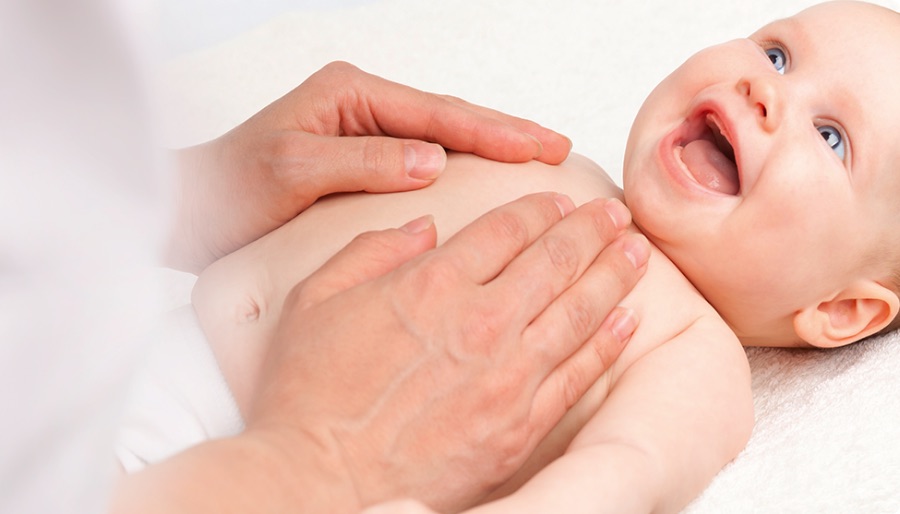补充益生菌产品,例如那些含有LGG®鼠李糖乳酪杆菌菌株的产品,与缓解急性腹泻、1,2抗生素相关性腹泻3,4和院内感染性腹泻有关5。
益生菌有助婴儿和儿童偶发性腹泻管理
-- LGG®鼠李糖乳杆菌菌株可助管理急性、抗生素相关性和医院获得性腹泻

由于效果显著,世界各地的机构和专家组均推荐用LGG® 鼠李糖乳酪杆菌菌株来调理腹泻
需注意的因素:
急性腹泻:每天服用100亿CFU(菌落数)的LGG®鼠李糖乳酪杆菌菌株,连续服用5-7天 ;
抗生素相关性腹泻:每天服用100-200亿CFU的LGG®鼠李糖乳酪杆菌菌株。在开始使用抗生素的当天就开始服用LGG®鼠李糖乳酪杆菌菌株(使用抗生素数小时后服用),LGG®鼠李糖乳酪杆菌菌株服用天数比抗生素疗程长一周。
医院获得性腹泻:住院期间每天服用100亿CFU的LGG®鼠李糖乳酪杆菌菌株。
发病率高
无论是急性、服用抗生素引起的还是院内感染性腹泻,都是重大的健康负担。6婴幼儿腹泻的发病率特别高,在全球范围内,每个3岁以下儿童每年至少发生1次急性腹泻。6
菌群失调和腹泻
简而言之,腹泻是离子和水运动的改变。当胃肠道处于健康且菌群处于平衡时,胃肠道有能力吸收液体和电解质。7这是由于有益菌阻断了致病菌的活动,从而帮助维持胃肠道的健康。然而,当感染致病
菌或会引起腹泻的病毒(如轮状病毒)时,粘膜会受损,导致肠道上皮过度分泌或对液体和电解质的吸收受损。8
有证据表明,一些益生菌菌株可通过多种机制帮助维持胃肠道健康9,10,LGG®鼠李糖乳酪杆菌菌株就是这样一株菌株,该菌株具有诸多健康益处,如与增强肠上皮屏障的完整性、11,12调节免疫反应、12,13
和抑制病原体等15,16相关”。
急性腹泻
腹泻是由细菌和病毒等多种病原体引起的常见胃肠道感染现象,轮状病毒是其主要病因。17急性腹泻的定义是“每天至少有3次稀便或水样大便,或对某些特定人群来讲比正常大便次数多,18持续时间通常
少于7天且不超过14天。19 3岁以下儿童的发病率在每年0.5-1.9次之间。18
尽可能补水是重新平衡液体和电解质的关键19。此外,已证实一些益生菌菌株与胃肠道健康有关,例如,在补充LGG®鼠李糖乳酪杆菌菌株期间,观察到症状持续时间更短且改善速度更快1,2。
这些结果是在患有急性腹泻且连续5-7天服用LGG®鼠李糖乳酪杆菌菌株(100亿CFU/天)的儿童身上观察到的。19

抗生素相关性腹泻
抗生素相关性腹泻(AAD)实验组常见且具有挑战性的疾病,无论门诊还是住院患者,使用抗生素的患者中此病发生率可达三分之一。21在排除其它病因的情况下,AAD是与抗生素治疗相关的腹泻,22几乎任何口服和静脉注射的抗生素治疗都能引起AAD。然而,使用氨基青霉素(无论是否与克拉维酸、头孢菌素或克林霉素联用)时,患AAD的风险更高;一般来说,使用的抗生素具有抗厌氧菌活性时,患AAD的风险都很高。23
由于AAD不一定立即发生,而可能在治疗后的几周或几个月后发生,因此必须谨慎,以便将AAD与感染性胃肠炎的发作区分开来。22AAD通常表现为轻度腹泻,但也可表现为暴发性伪膜性结肠炎。24通常,AAD没有明确的病原体,但在最严重的病例中,或与癌症和炎症性肠病等慢性病相关的情况下,其病因通常是艰难梭菌。24
抗生素在破坏微生物致病性的同时,也破坏了益生菌和其竞争性排斥机制(菌群消除致病性微生物的方式之一)。AAD可能是由于肠道菌群受到破坏及病原体过度生长而引起的。21, 22, 25研究表明,一些益生菌菌株与减少AAD的发生有关。具体而言,补充LGG®鼠李糖乳酪杆菌菌株与减少儿童服用抗生素引起的腹泻相关。3,4
根据临床研究结果3,4 ,推荐采用以下方式服用LGG®鼠李糖乳酪杆菌菌株以优化潜在功效:在开始使用抗生素的当天就开始服用LGG®鼠李糖乳酪杆菌菌株(在使用抗生素数小时后服用)26,且LGG®鼠李糖乳酪杆菌菌株的服用天数比抗生素疗程长一周。

医院获得性腹泻
医院获得性腹泻又称“院内感染”或“医疗相关性感染”,其是在入院48小时后发病,且入院时不存在感染或不处于潜伏状态26。由于季节和病房等因素,发达国家儿童的医院获得性腹泻感染的发病率很高,从5.1%到11.6%不等27,其中胃肠道感染占大多数28,29,30。由于住院时间延长、治疗效果受影响以及微生物的抗生素耐性增加,使得医院获得性腹泻相关的治疗花费十分庞大5。
益生菌产品与减轻由院内感染引起的偶发性腹泻的症状相关。一项研究表明,对在儿科接受治疗的儿童,住院期间每天补充100亿CFU的LGG®鼠李糖乳酪杆菌菌株,院内感染性胃肠道感染和呼吸道感染的发生率有所降低。5,31
LGG®是科汉森有限公司的商标。®代表科汉森长期使用、具有较高知名度并已在中国获得注册的商标。
免责声明:本文章的目的是提供有关益生菌的信息,并不表示文章中提到的任何物质可用来诊断、减轻、治疗、治愈或预防任何疾病。如果您正面临具体的医疗问题,请务必咨询医生或专业人士。本文引用的相关文件、数据或研究结果仅供参考,不构成对任何人的直接建议或指导。所引用的文献、资料或研究仅为作者的观点,并不代表科汉森的立场。如需转载、节选、链接或以任何其他方式引用本文章内容,请确保符合中国法律法规,科汉森对引用本文章内容所产生的任何法律后果不负法律责任。
参考文献 打开 关闭
- Aggarwal S, et al. Lactobacillus GG for treatment of acute childhood diarrhoea: an open labelled, randomized controlled trial. Indian J Med Res. 2014;139(3):379-85. (PubMed)
- Isolauri E, et al. A human Lactobacillus strain (Lactobacillus casei sp strain GG) promotes recovery from acute diarrhea in children. Pediatrics. 1991;88(1):90-7. (PubMed)
- Arvola T, et al. Prophylactic Lactobacillus GG reduces antibiotic-associated diarrhea in children with respiratory infections: a randomized study. Pediatrics. 1999;104(5):e64. (PubMed)
- Vanderhoof JA, et al. Lactobacillus GG in the prevention of antibiotic-associated diarrhea in children. The Journal of Pediatrics. 1999;135(5):564-8. (PubMed)
- Hojsak I, et al. Lactobacillus GG in the prevention of nosocomial gastrointestinal and respiratory tract infections. Pediatrics. 2010;125(5):e1171-7. (PubMed)
- Thiagarajah JR, et al. Secretory diarrhoea: mechanisms and emerging therapies. Nat Rev Gastroenterol Hepatol. 2015;12(8):446-57. (PubMed)
- Hodges K, Gill R. Infectious diarrhea: Cellular and molecular mechanisms. Gut Microbes. 2010;1(1):4-21. (PubMed)
- Walker CLF, et al. Global burden of childhood pneumonia and diarrhoea. Lancet. 2013;381(9875):1405-16. (PubMed)
- Lemberg DA, et al. Probiotics in paediatric gastrointestinal diseases. J Paediatr Child Health. 2007;43(5):331-6. (PubMed)
- Yan F, et al. Soluble proteins produced by probiotic bacteria regulate intestinal epithelial cell survival and growth. Gastroenterology. 2007;132(2):562-75. (PubMed)
- Seth A, et al. Probiotics ameliorate the hydrogen peroxide-induced epithelial barrier disruption by a PKC- and MAP kinase-dependent mechanism. Am J Physiol Gastrointest Liver Physiol. 2008;294(4):G1060-9. (PubMed)
- Chen L, et al. Lactobacillus rhamnosus GG treatment improves intestinal permeability and modulates microbiota dysbiosis in an experimental model of sepsis. Int J Mol Med. 2019;43(3):1139-48. (PubMed)
- Claes IJ, et al. Lipoteichoic acid is an important microbe-associated molecular pattern of Lactobacillus rhamnosus GG. Microb Cell Fact. 2012;11:161. (PubMed)
- Lebeer S, et al. Functional analysis of Lactobacillus rhamnosus GG pili in relation to adhesion and immunomodulatory interactions with intestinal epithelial cells. Appl Environ Microbiol. 2012;78(1):185-93. (PubMed)
- Lu R, et al. Isolation, identification, and characterization of small bioactive peptides from Lactobacillus GG conditional media that exert both anti-Gram-negative and Gram-positive bactericidal activity. J Pediatr Gastroenterol Nutr. 2009;49(1):23-30. (PubMed)
- Marianelli C, et al. Evaluation of antimicrobial activity of probiotic bacteria against Salmonella enterica subsp. enterica serovar typhimurium 1344 in a common medium under different environmental conditions. Res Microbiol. 2010;161(8):673-80. (PubMed)
- Lo Vecchio A, et al. Rotavirus immunization: Global coverage and local barriers for implementation. Vaccine. 2017;35(12):1637-44. (PubMed)
- World Health Organisation. Diarrhoea: Why children are still dying and what can be done. 2009.
- Szajewska H, et al. Use of probiotics for management of acute gastroenteritis: a position paper by the ESPGHAN Working Group for Probiotics and Prebiotics. J Pediatr Gastroenterol Nutr. 2014;58(4):531-9. (PubMed)
- Barbut F, Meynard JL. Managing antibiotic associated diarrhoea. BMJ. 2002;324(7350):1345-6. (PubMed)
- McFarland LV. Epidemiology, risk factors and treatments for antibiotic-associated diarrhea. Dig Dis. 1998;16(5):292-307. (PubMed)
- McFarland LV, et al. Risk factors for Clostridium difficile carriage and C. difficile-associated diarrhea in a cohort of hospitalized patients. J Infect Dis. 1990;162(3):678-84. (PubMed)
- McFarland LV. Meta-analysis of probiotics for the prevention of antibiotic associated diarrhea and the treatment of Clostridium difficile disease. Am J Gastroenterol. 2006;101(4):812-22. (PubMed)
- Hasan N, Yang H. Factors affecting the composition of the gut microbiota, and its modulation. PeerJ. 2019;7:e7502-e. (PubMed)
- World Gastroenterology Organisation. World Gastroenterology Organisation Global Guidelines - Probiotics and prebiotics. 2011.
- World Health Organization. Prevention of Hospital-acquired Infections. Geneva, Switzerland; 2002.
- World Health Organisation. Report on the Burden of Endemic Health Care-associated Infection Worldwide. Geneva, Switzerland; 2011.
- Muhlemann K, et al. Prevalence of nosocomial infections in Swiss children's hospitals. Infect Control Hosp Epidemiol. 2004;25(9):765-71. (PubMed)
- Rutledge-Taylor K, et al. A point prevalence survey of health care-associated infections in Canadian pediatric inpatients. Am J Infect Control. 2012;40(6):491-6. (PubMed)
- Kinnula S, et al. Hospital-associated infections in children: a prospective post-discharge follow-up survey in three different paediatric hospitals. J Hosp Infect. 2012;80(1):17-24. (PubMed)
- Hojsak I, et al. Probiotics for the Prevention of Nosocomial Diarrhea in Children. J Pediatr Gastroenterol Nutr. 2018;66(1):3-9. (PubMed)



